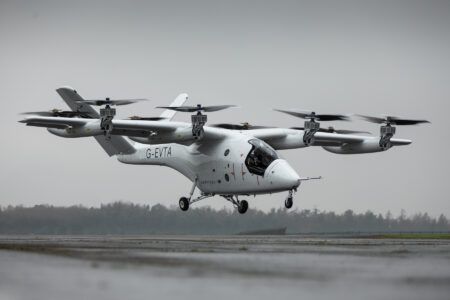The results of a study of the wings of gulls by Canadian engineers and zoologists could provide new ways to stabilize the flight of aircraft.
Engineers from the University of Toronto’s Institute of Aerospace Studies (UTIAS) and zoologists from the University of British Columbia (UBC) have partnered on a project that used the wind tunnel at UTIAS to study the way gulls change their wing shape to stabilize flight.
The researchers acquired specimens from from local wildlife rescue and rehabilitation organisations, prepared them with the help of a museum and posed the wings across the anatomical range of elbow angles in the wind tunnel.
They wind tunnel tests showed that with a simple adjustment of a gull’s elbow joints — either to expand its wings outwards or inwards — gulls are able to transition across a broad range of wing shapes to stabilize glide.
The wings were tested at 10 m/s (22mph) in the 1.2m wide by 0.8m high and 5m long wind tunnel (4ft x 2.6ft x 16ft), to provide the nominal range or Reynolds number conditions that the gulls experience during glide, about 90,000 to 180,000 depending on the wing size. Researchers measured the lift, drag and pitch moments of 12 different wing shapes using a load cell mounted at the root of the wings.
When soaring, the wings are fully extended and have a more rounded shape, which increases their stability. When taking off or landing they are tucked in more and have a flatter shape.
Researcher on the project from UTIAS, Professor Philippe Lavoie said, “If you can change the shape of the wings, you can create more stable configurations with lower drag when you want more endurance.
“Gulls can use updrafts to increase altitude so they don’t have to flap their wings as much to conserve energy. But if they need to make quick maneuvers, like diving to catch fish, they can change the shape of the wing for that particular purpose.
“The benefit of morphing is that you don’t need bulky control surfaces during flight and it makes it easier to take advantage of energy harvesting through soaring.”
The results of the study could inform the design of future aircraft, including fixed-wing drones, that could be designed to coast on thermal updrafts while they are used in monitoring and imaging applications.
“The idea of bio-inspired research is to try and understand how nature does it, given that it had millions of years to adapt to certain conditions,” said Lavoie. “Once we do that, we can see if there are elements that we can pluck out for our own designs.”
UBC researcher Christina Harvey said, “Conducting the research at the UTIAS wind tunnel was a key part of the work. I look forward to continuing to combine engineering tools and expertise with biological questions so that we can better understand avian flight.”





